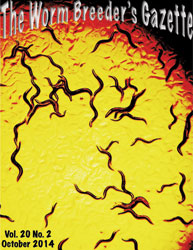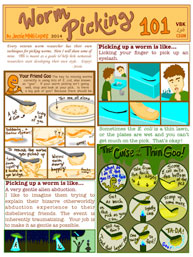To better understand how the giant muscle protein UNC-89 functions, we are identifying the binding partners of its many domains (Qadota et al. this issue of WBG). Using UNC-89 Ig domains 1-5 as bait to screen a yeast 2-hybrid library, we identified prey clones representing the gene tag-149. TAG-149 has near its N-terminus a predicted transmembrane helix, and near its C-terminus, a “copine domain”. The function of the copine domain is speculated to be involved in protein-protein interactions since it is weakly homologous to the extracellular portion of integrins. TAG-149 is an unusual copine family protein in that it has a copine domain but no C2 domains. Therefore, we have changed the name of TAG-149 to “CPNA-1” for “copine domain protein atypical-1”. Only the copine domain and Ig1-3 are required for the interaction between CPNA-1 and UNC-89.
Furthermore, when tested by 2-hybrid, no other region of UNC-89 as bait, showed interaction with CPNA-1 as prey. Interaction was confirmed in two ways: (1) CPNA-1 can be pulled out of a worm lysate using GST-Ig1-3 on beads; (2) by far western using MBP or MBP-CPNA-1 on the blot and His tagged Ig1-3 in solution. cpna-1 was also identified during a muscle transcriptome-wide RNAi screen to identify genes with the “Pat” phenotype that results from loss of function of genes crucial for muscle development (Meissner et al., 2009). An intragenic deletion for cpna-1, gk266, displays the typical Pat phenotype of paralysis and arrest at the two-fold stage of embryonic development. The Pat phenotype has been found in loss of function mutants of many components of the muscle focal adhesion structures (M-lines and dense bodies).
Affinity purified rabbit antibodies have been generated to CPNA-1, and these antibodies react with a protein of ~130 kDa, the size expected for CPNA-1b. When used in immunofluorescence experiments on whole worms, CPNA-1 was found to localize to both M-lines and dense bodies. Two pieces of data suggest that CPNA-1 lies close to the muscle cell membrane: (1) CPNA-1 lies in the same focal plane as UNC-112::GFP. UNC-112 is a member of a four-protein complex that associates with the cytoplasmic tail of integrin. (2) When muscle is co-stained with anti-CPNA-1 and anti-UNC-89, a Z-series shows that although UNC-89 is full-depth, CPNA-1 lies closer to the muscle cell membrane. To further understand how CPNA-1 is localized to muscle focal adhesions, we used CPNA-1 to screen our 2-hybrid bookshelf of 30 known components of these structures. Results indicate that CPNA-1 interacts with UNC-96, LIM-9, SCPL-1 and HUM-6. Immunostaining of wild type embryos shows that CPNA-1 is largely confined to a narrow region of embryonic muscle cells, similar to the localization of integrin. Significantly, in gk266 homozygous mutant embryos in which CPNA-1 is missing, integrin is largely delocalized or diffuse. We hypothesize that CPNA-1 has at least 2 functions: (1) to anchor several proteins (UNC-89, UNC-96, LIM-9 and SCPL-1) to the M-line in adult muscle, and (2) to regulate or co-operate with integrin at muscle focal adhesions during myofibril assembly.
References
Meissner B. et al. (2009). An integrated strategy to study muscle developmentand myofilament structure in C. elegans. PLoS Genetics 5, e1000537. 




